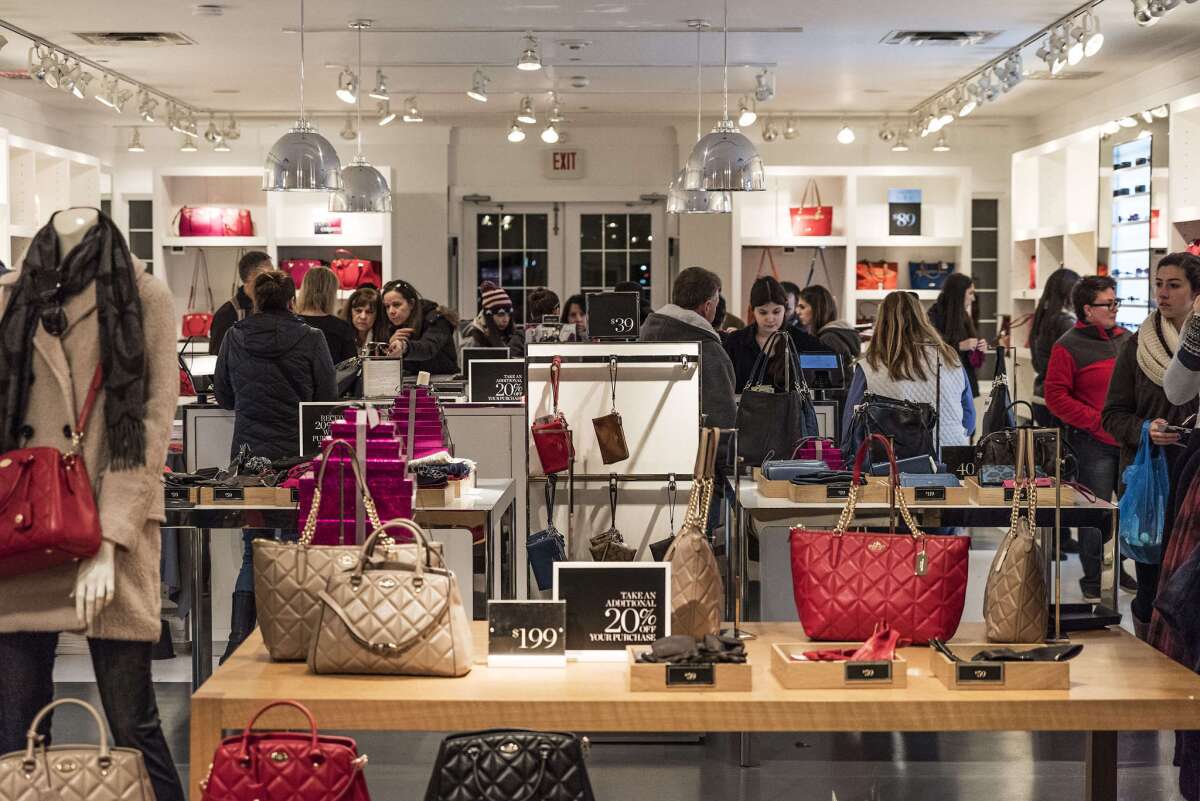Coach and Michael Kors deliver another blow to department stores

- Share via
Struggling department stores, already facing declining customer traffic, just suffered a one-two punch from brands seen as major lures for shoppers.
On Wednesday, Michael Kors said it would reduce the amount of merchandise sent to department stores. The day before, Coach said it planned to pull its purses and other goods from 250 of these bricks-and-mortar stores — about 25% of such locations.
Both brands said that the hefty discounting now common at department stores has cut into margins and their perceived cachet with customers.
“It’s creating confusion in the consumers’ mind relative to the value of the Michael Kors brand,” Chief Executive John Idol said in a Wednesday analyst call. “We have to correct something that we think is actually having a negative long-term effect for the brand.”
Victor Luis, the chief executive of Coach, echoed that complaint, telling analysts that the “high level” of promotions will damage the company’s “long-term brand health.”
These defections come as department stores — and malls in general — are seeing their importance plummet among American consumers. Macy’s, Nordstrom, Sears and Kohl’s have all reported disappointing first quarter earnings.
Department stores are “hanging on the edge of a cliff with three fingernails holding them up,” said Britt Beemer, founder of America’s Research Group. “They have lost so many shoppers, and they are losing so many shoppers.”
Beemer said shoppers who prefer physical stores are gravitating toward more specialty retailers or malls that offer experiences such as outdoor entertainment and dining. As department stores and many shopping centers have cut back on customer service, consumers have become disenchanted with these destinations in general.
Many shoppers are now opting for the convenience of e-commerce.
“The mall was once considered America’s town square,” according to a report from Thrivent Asset Management. “But as recent retail sales figures reveal, Americans continue to move away from the mall, spending more of their time socializing and shopping online.”
For accessible luxury brands such as Michael Kors and Coach, which are already fighting to stay hip, maintaining higher prices in shops that frequently roll out heavy sales could be crucial to maintaining an exclusive, luxurious status.
At department stores, Michael Kors said it will stop participating in friends and family sales, and won’t accept coupons anymore. Coach said it will tamp down on the level of markdowns allowed.
Coach operates about 460 of its own stores in North America and about 1,000 stores worldwide. Michael Kors operates 390 stores in the Americas and about 670 stores around the world (another 200 stores are run through licensing partners).
Many of those stores are in shopping centers that are also home to Macy’s, Nordstrom and other department stores, analysts said. That can create confusion among shoppers, or give a bargain-hunting attitude anathema to brands peddling a luxury vibe.
“If you’re a Michael Kors store in the mall, and there is a Macy’s and they are discounting you,” Beemer said, “shoppers are going for the discount.”
The brands aren’t equally dependent on department stores.
About 40% of total sales for Michael Kors comes from wholesale, which includes department stores. In the first quarter, the company reported its wholesale business dropped 7%, while sales at its own stores climbed 7.6%.
Coach, which does not break out its wholesale side, probably gets about 5% of sales from department stores, according to a Wells Fargo report. Some analysts speculated that it will move out of lower-tier department stores and focus on more luxury chains such as Nordstrom and Saks.
Some industry experts said the companies themselves are more to blame their troubles, not their placement in department stores.
Department stores give brands more exposure and higher foot traffic from shoppers who may not go inside their own stores; on the flip side, that sometimes translates into over-saturation, with a brand’s fortunes tied to that of a department-store chain.
However, if a company was still churning out highly coveted products, analysts said, shoppers would be willing to pay full-price for their bags.
“These brands go through cycles,” Beemer said. “The only people who can destroy a brand is the brand.”
More to Read
Inside the business of entertainment
The Wide Shot brings you news, analysis and insights on everything from streaming wars to production — and what it all means for the future.
You may occasionally receive promotional content from the Los Angeles Times.








